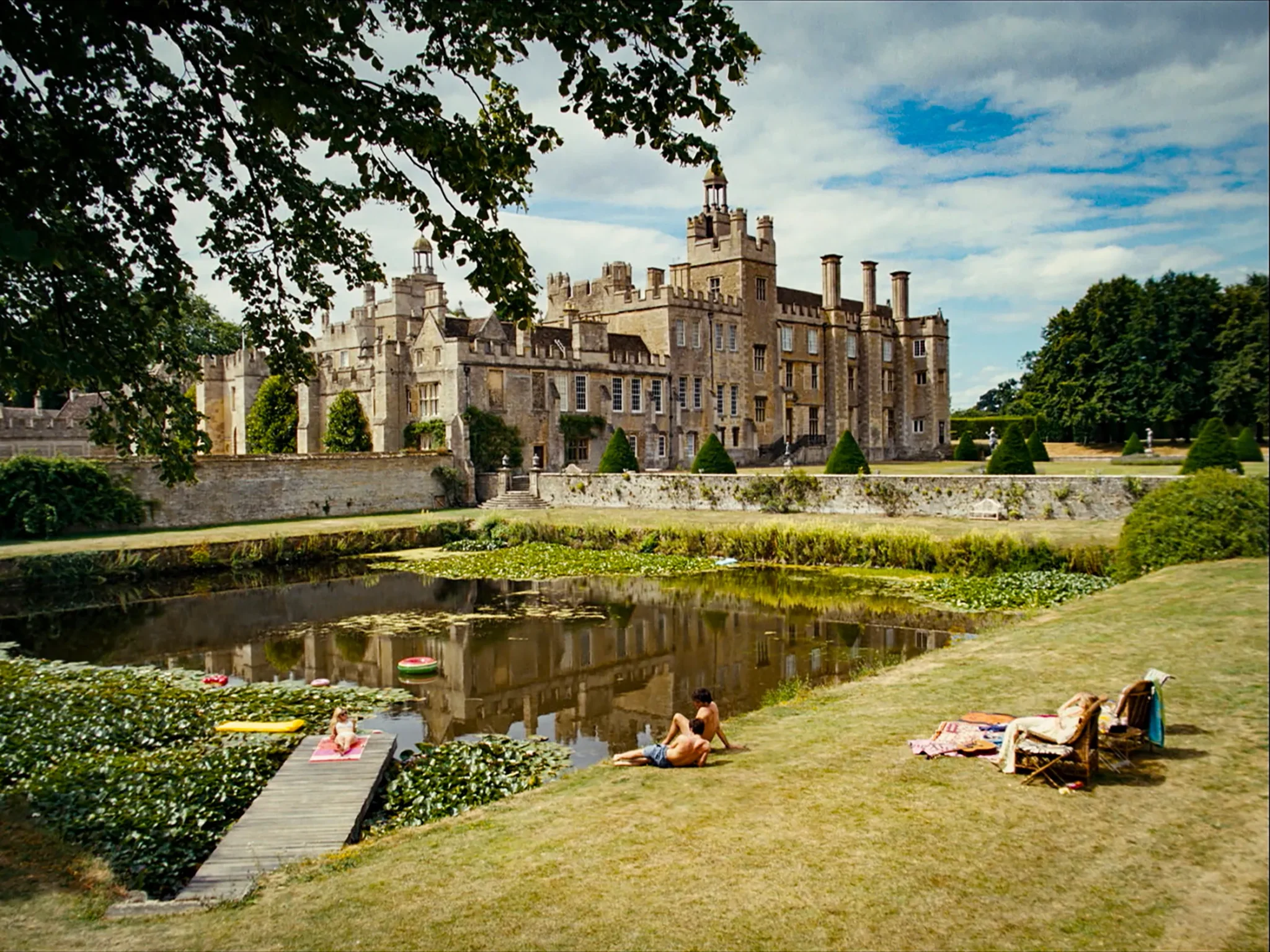In our ongoing series Screening Room, we go behind the scenes with the uber-talented production designers and set decorators of today’s most visually alluring TV shows and movies for a deep dive on how they whipped up such indelible backdrops. This week: Mark Ricker, the Oscar-nominated mastermind behind the sexy, red-hot interiors in Halston, Netflix’s miniseries featuring Ewan MacGregor as the famed American fashion designer.
• • •
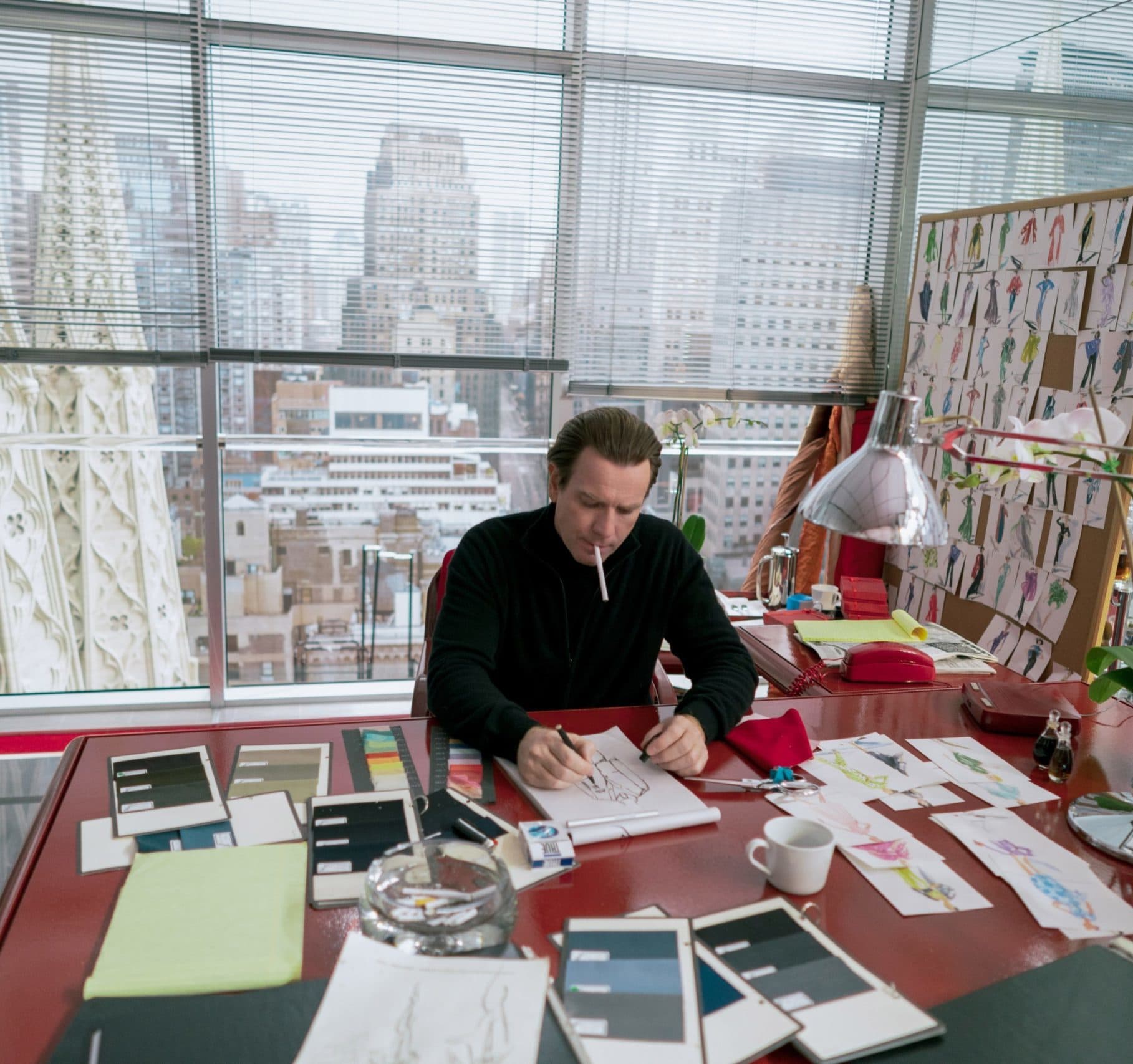
“The 1970s wasn’t all about shagged carpet, avocado and orange appliances,” says Mark Ricker, “There was this sense of style. You just had to find it.” That was the veteran set designer’s stated mission on his latest project, the knee-deep-in-cocaine-and-polyester Halston, a limited Netflix series starring Ewan MacGregor as the comet-like fixture of New York in that louche era.
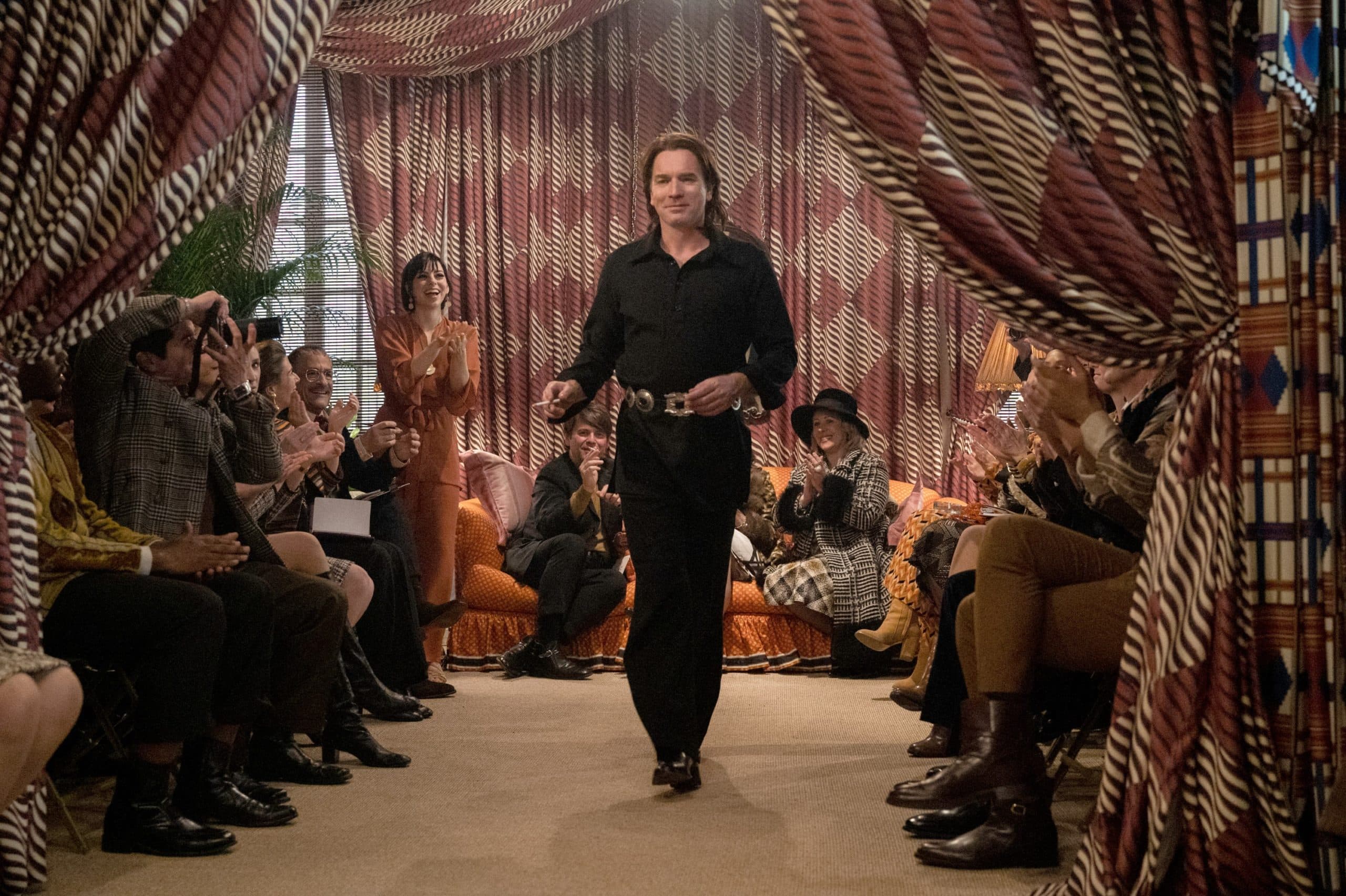
Halston walks down the runway after the debut of his famous c. 1968 Tie-Dye collection.Jojo Whilden / ©Netflix / Courtesy Everett Collection
Though Halston made his name as a milliner and fashion designer, he was fastidious about the entire aesthetic of his life, interiors included. Ricker knew that the series’ sets wouldn’t just evoke a milieu, but also shade in elements of the character. As on any project that’s based in fact, he referenced photographs of the various locations in Halston’s life, like his showroom on Fifth Avenue in the Olympic Tower. Ricker also relied heavily on several books by Barbara Plumb, who covered contemporary design in the era—think Houses Architects Live In (1977) and Young Designs in Living (1969). “It was a constant reminder of how chic the interiors could be.”
Halston’s celebrity, of course, was wrapped up in the fabric with which he became synonymous: Ultrasuede, that shagadelic, weatherproof alternative to natural calfskin made from polyester. He used it everywhere, in his interiors as well as in his designs, and Ricker believes it was essential to the sex-soaked vibe of both the designer’s life and the show. “Halston didn’t invent it, Oscar de la Renta may have been using it [first],” Ricker explains, “But we had a series of furniture pieces that we upholstered in it, and there is just something very sexy about sitting on it. It’s smooth and silky, and no one had ever felt a fabric like that on the skin in the 1960s.”
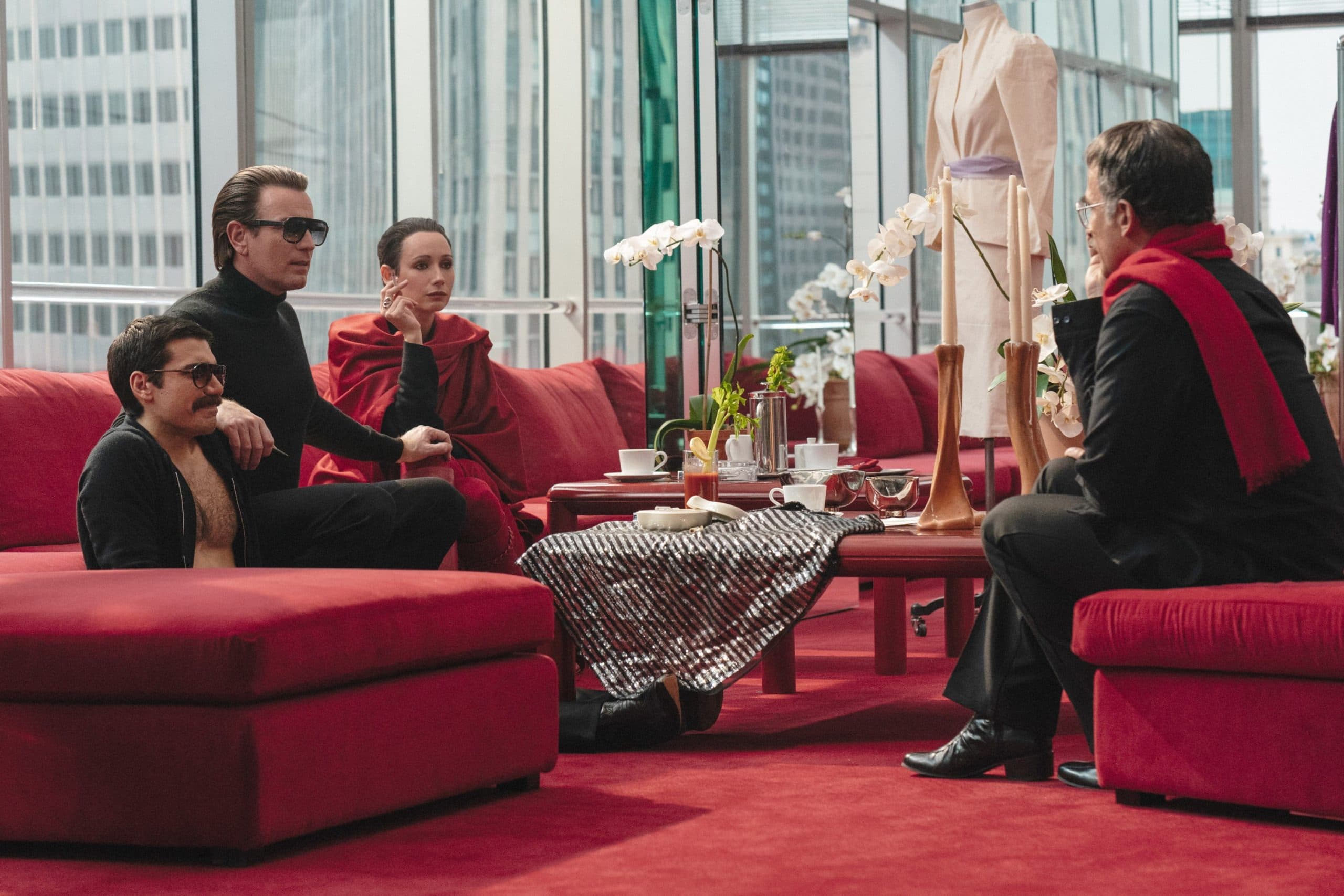
Ewan McGregor as Halston holds court in the designer’s airy, monochromatic office in midtown’s Olympic Tower.Atsushi Nishijima / ©Netflix / Courtesy Everett Collection
The designer’s signature color, a racy red, was another nod to sex. Fittingly, Ricker used it relentlessly, although he couldn’t identify the exact shade Halston preferred; no documentation exists to settle that question. Instead, the set designer found a rug—from Carpet Time in Queens, where many of his NYC-based peers shop for props—and built a palette around that. His dutiful doubling down on red had an unexpected effect on filming. “We had to go back and forth about lighting, and compensate with the camera for how much residual glow there was on the actors’ skins.”
The set designer, who was Emmy-nominated for his work on Ben Stiller’s Escape from Dannemora, might surprise some when he points out kinship between the aesthetics of the 2020s and the 1970s. Look at the private home they fitted out as Halston’s mansion. “It was a new house in Red Hook that was ultra-contemporary, with a Venice, California feel,” Ricker says. “People think of Halston’s home as an iconic place, not just for its architecture, but because it came to symbolize the whole era—a sunken living room, where people would present themselves before they went down into the pit of debauchery.”

McGregor’s Halston and Rebecca Dayan as Elsa Peretti in the designer’s Upper East Side townhouse, which is now owned by Tom Ford.Atsushi Nishijima / ©Netflix
That wasn’t the only indelible location he had to try to replicate—or, at least, evoke. Take Studio 54, which appears in several different scenes, including a birthday party for Valentino and Bianca Jagger’s famous arrival, nude, on a white horse. Ricker used the Hammerstein Ballroom as a stand-in for the original club as many have before. He tricked out the interior with a few key items, building the gold bar to scale and using photographs from the catalog of the recent Brooklyn Museum’s Night Magic show about the club. He also constructed its signature neon arch, originally built for the first production of Chicago and discarded when that show closed. The problem lay mostly in operating within pandemic protocols, which forbade the use of dry ice and minimized the number of extras who could boogie in the background. “We did a lot with balloons,” he laughs.
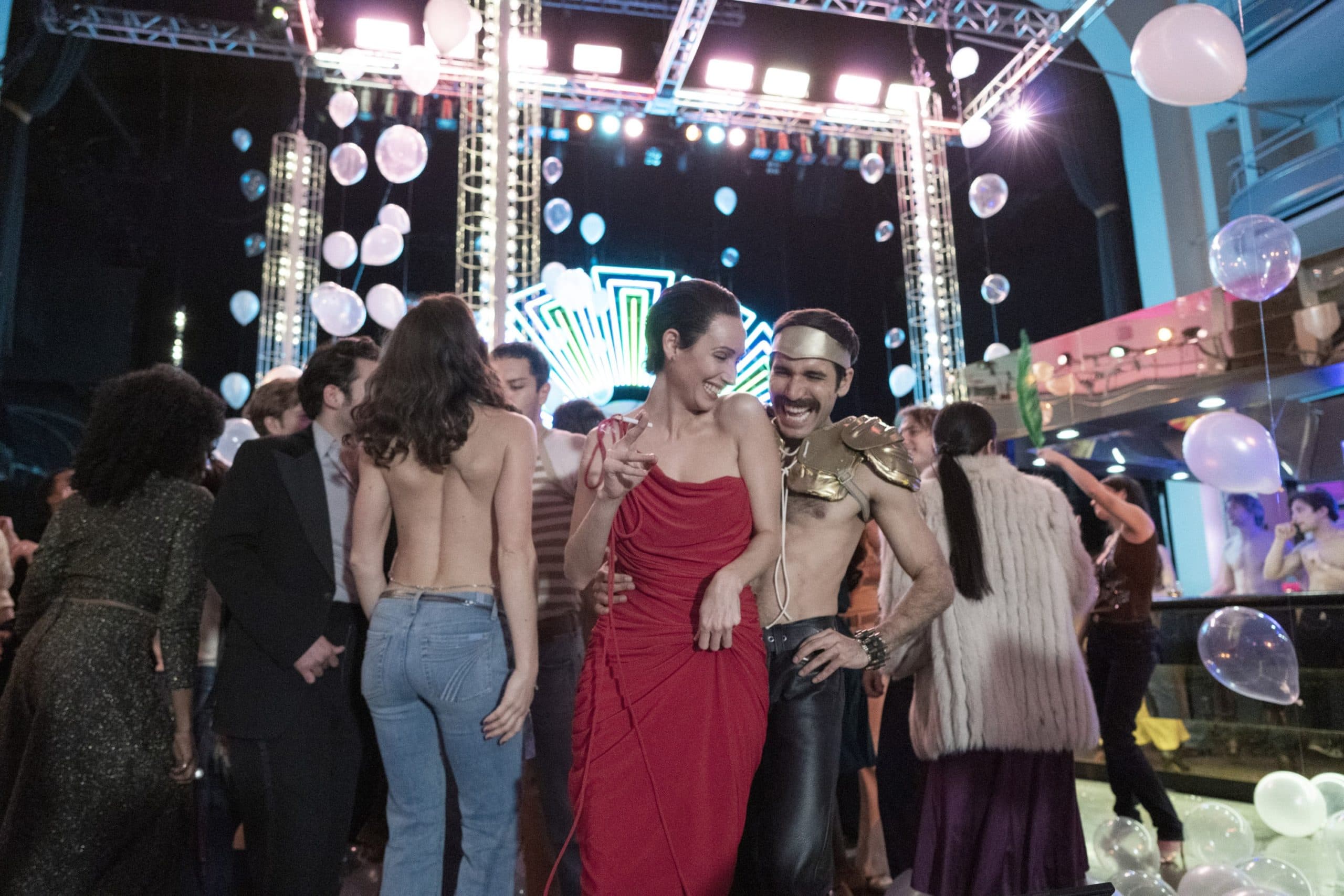
Ricker constructed Studio 54’s signature neon arch, originally built for the first production of Chicago and discarded when that show closed. The problem lay mostly in operating within pandemic protocols, which forbade the use of dry ice and minimized the number of extras who could boogie in the background. “We did a lot with balloons,” he laughs.Atsushi Nishijima / ©Netflix / Courtesy Everett Collection
COVID-19 constrained almost the entire production this way, as only one episode of the series was completed before the pandemic shut down film and TV stateside in March 2020. The show resumed in the fall, operating within new COVID-safe protocols, which included limiting the number of sites Ricker could use. Fortunately, he stumbled on a forgotten gem that would easily time-warp back to the 1970s (and the 1980s, which the final episodes depict): the old Ralph Lauren offices on Madison Avenue.
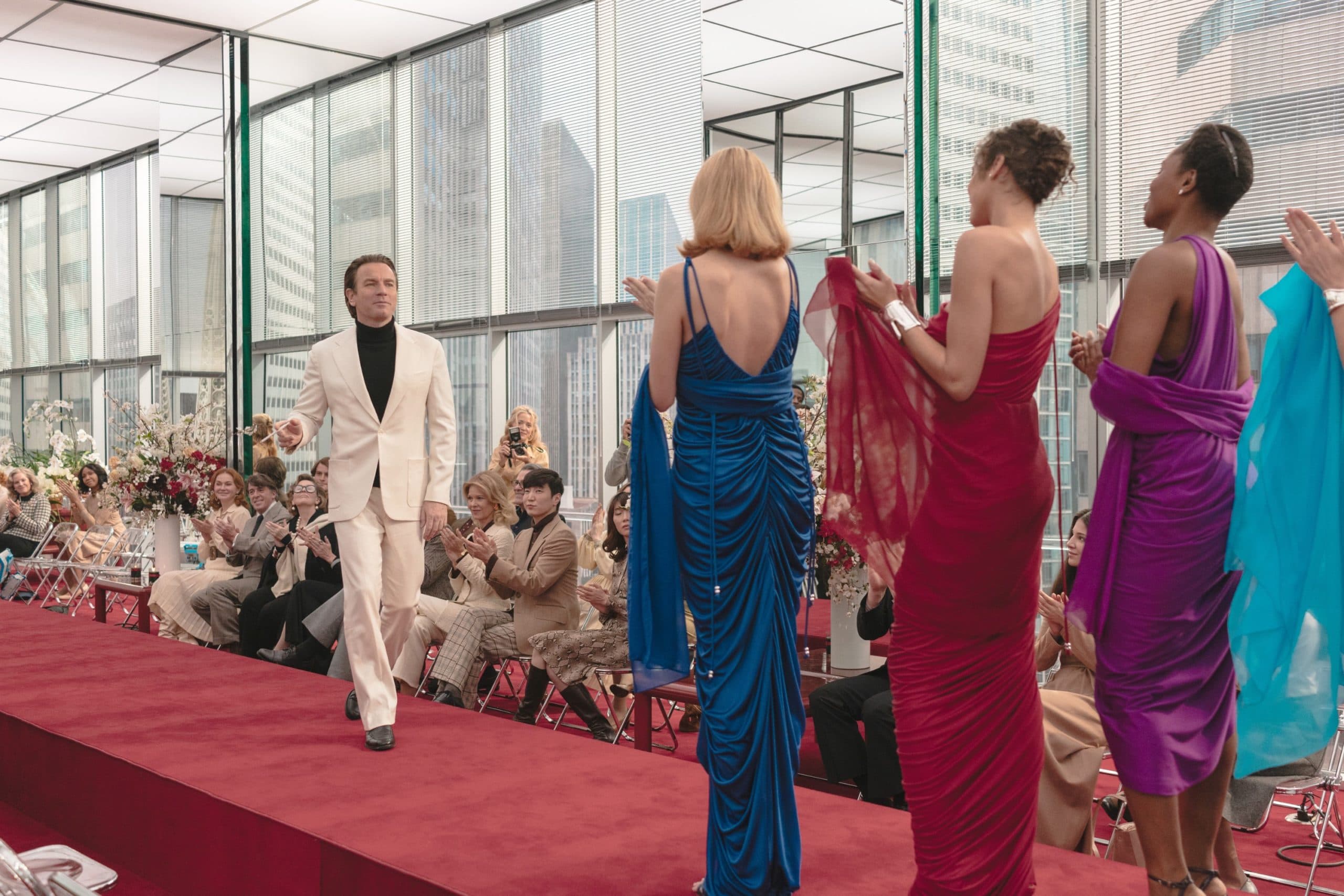
The designer’s signature color, a racy red, was a nod to sex. Fittingly, Ricker used it relentlessly, although he couldn’t identify the exact shade Halston preferred; no documentation exists to settle that question.Atsushi Nishijima / ©Netflix / Courtesy Everett Collection

















